Marrying Vega and Zen: The AMD Ryzen 5 2400G Review
by Ian Cutress on February 12, 2018 9:00 AM ESTBenchmarking Performance: CPU Office Tests
The office programs we use for benchmarking aren't specific programs per-se, but industry standard tests that hold weight with professionals. The goal of these tests is to use an array of software and techniques that a typical office user might encounter, such as video conferencing, document editing, architectural modelling, and so on and so forth.
All of our benchmark results can also be found in our benchmark engine, Bench.
Chromium Compile (v56)
Our new compilation test uses Windows 10 Pro, VS Community 2015.3 with the Win10 SDK to combile a nightly build of Chromium. We've fixed the test for a build in late March 2017, and we run a fresh full compile in our test. Compilation is the typical example given of a variable threaded workload - some of the compile and linking is linear, whereas other parts are multithreaded.
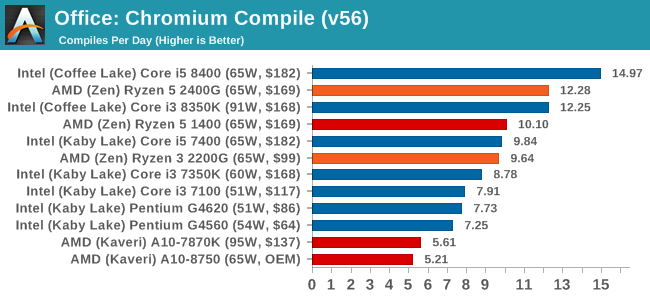
Our compile test has an eclectic mix of requirements, with different segments having different bottlenecks. The Ryzen 5 2400G matches the higher frequency of the Core i3-8350K, even though it already has a core and memory advantage. An interesting thing here is that the Ryzen 3 2200G and the Ryzen 5 1400 are almost evenly matched, even though the 1400 has double the threads. This is because of the frequency of the 2200G, and the memory speed.
PCMark 10
PCMark 10 is the latest all-in-one office-related performance tool that combines a number of tests for low-to-mid office workloads, including some gaming, but focusing on aspects like document manipulation, response, and video conferencing.

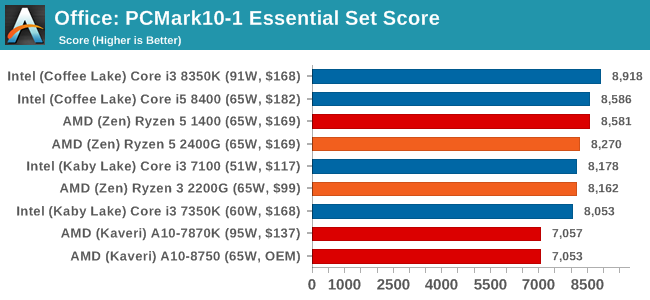
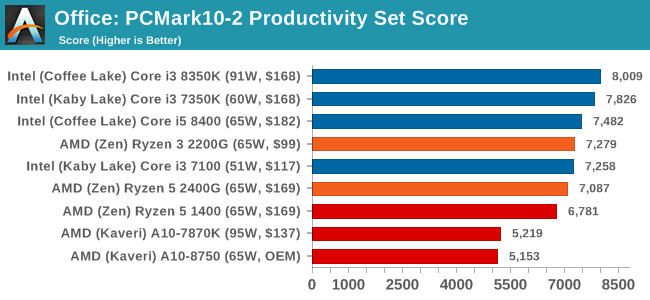
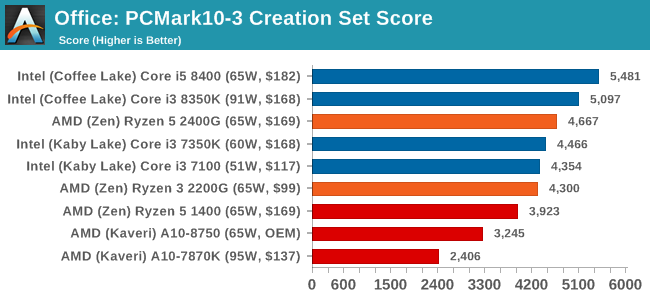
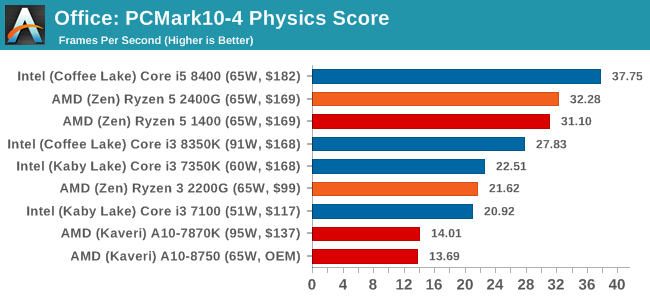
PCMark8: link
Despite originally coming out in 2008/2009, Futuremark has maintained PCMark8 to remain relevant in 2017. On the scale of complicated tasks, PCMark focuses more on the low-to-mid range of professional workloads, making it a good indicator for what people consider 'office' work. We run the benchmark from the commandline in 'conventional' mode, meaning C++ over OpenCL, to remove the graphics card from the equation and focus purely on the CPU. PCMark8 offers Home, Work and Creative workloads, with some software tests shared and others unique to each benchmark set.
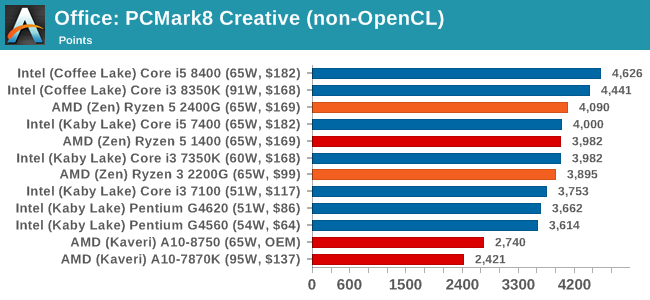
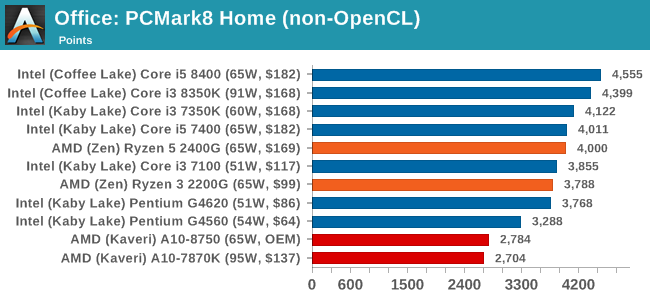
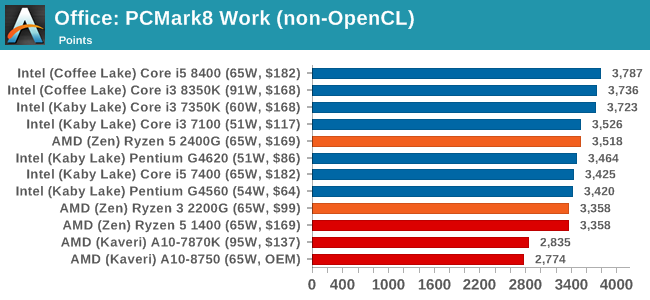










177 Comments
View All Comments
jjj - Monday, February 12, 2018 - link
Playable means 30FPS and has been that for.. ever.AndrewJacksonZA - Monday, February 12, 2018 - link
Typo page 1: "Fast forward almost two years, to the start of 2018. Intel did have a second generation eDRAM product"The linked article is from 2 May 2016, not the start of 2018.
richardginn - Monday, February 12, 2018 - link
If only the ram used in the 2400G review kits was not so god damn expensive. It is more expensive than the CPU.Ian Cutress - Monday, February 12, 2018 - link
This is true - technically we were sampled a different DDR4-3200 kit to be used. Normally our policy here is to use the maximum supported DRAM frequency of the processor for these tests - in the past there is a war of words when reviews do not, from readers and companies. When we do our memory scaling piece, it'll be with a wide range of offerings.richardginn - Monday, February 12, 2018 - link
I certainly want to see the memory scaling piece before making a purchase.RBD117 - Monday, February 12, 2018 - link
Hey Ian, thanks for the great review. I think your Cinebench-1T scores should be higher, in the 151-160 range for the 2200G and 2400G respectively. AMD pushed a microcode update through BIOS to testers very very late last week. A lot of the changes significantly boosted single-thread performance in general, even in some games. Did you folks end up getting this?Ian Cutress - Monday, February 12, 2018 - link
I only started testing with the new BIOS: can you confirm the difference is on both the motherboards AMD sampled? Some got MSI, others got GIGABYTE. We had MSI.RBD117 - Monday, February 12, 2018 - link
Ah okay. I believe it should have been updated on both MSI and Gigabyte...at least, I was told it should have landed on both platforms for standardization.jrs77 - Monday, February 12, 2018 - link
I would've loved to see you compare the 2400G against the i7-5775C with regards to 1080p gaming, as I can play games like Borderlands, WoW or Diablo in 1080p with medium settings on my Broadwell Iris graphics just fine.If the 2400G doesn't allow for higher graphics settings than the i7-5775C, than I don't really see them taking the crown for integrated graphics. intel is just too stoopid to use what they have it seems.
nierd - Monday, February 12, 2018 - link
When that i7 cost less than 150 then it will make the chart. At the price point it's at I can buy one of these chips and a $200 graphics card and do laps around the i7 all day.